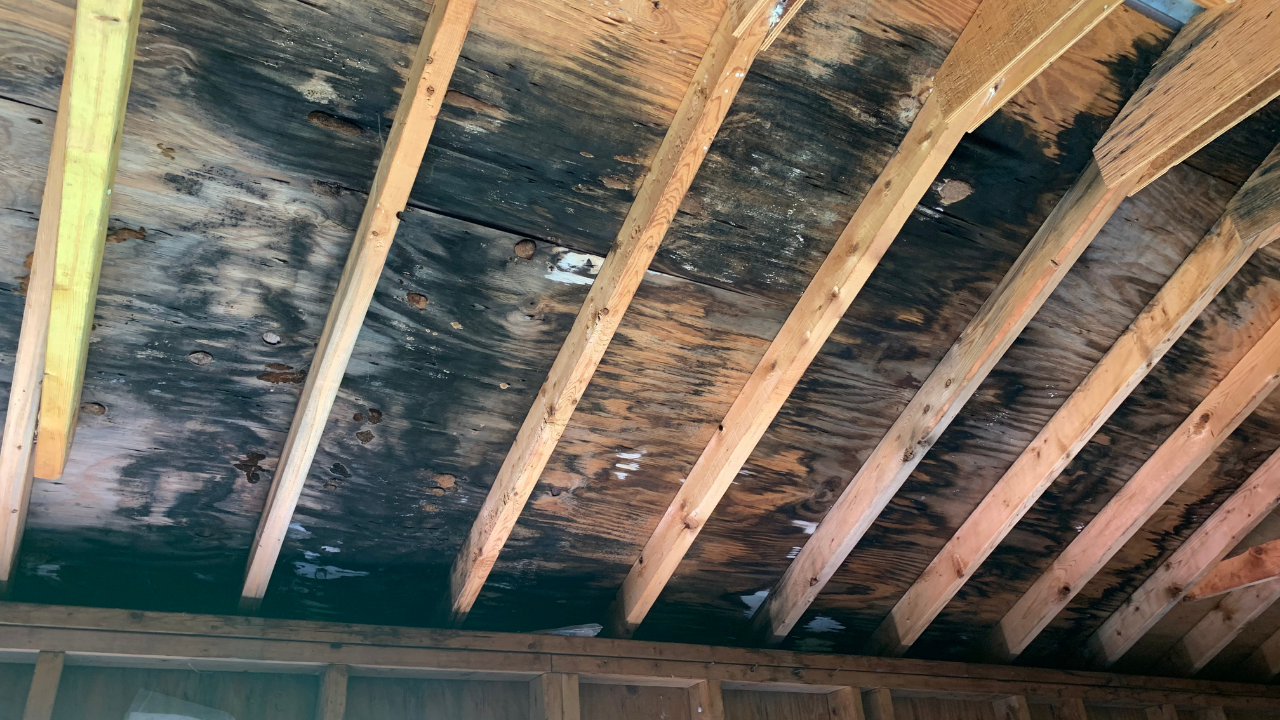It goes without saying that dealing with a mold infestation is any homeowner’s worst nightmare. While it can damage your home and ruin your furniture, mold can also cause a variety of health issues. And though most types of mold can cause health issues in certain people, none is more toxic than black Mold – Stachybotrys. You can stop its exposure in your home by following these tips.
What Is Black Mold?
Let’s start with the basics and understand what black mold is exactly. As you can imagine, we get many calls from homeowners concerned that what they’re encountering is, in fact, black mold. Black mold, or Stachybotrys chartarum, is a type of mold that lives on moist surfaces that are rich in cellulose, like drywall, gypsum board, and fiberboard. As the name suggests, it appears as a colony with a black, slimy, or dark green surface. To get even more specific, it’s a variety of microfungus that produces its conidia in slime heads.
While you may think the “black mold” you see creeping along your shower tub or window sill is the real deal, not all black mold, in color, is truly toxic. It can look like black mold with your eyes but that doesn’t mean that it’s Stachybotrys chartarum. The real black mold isn’t going to grow on the grout in your shower, it needs cellulose that’s wet, paper-like material, and/or drywall.
Despite knowing this, it’s hard to distinguish black mold from other species without professional testing, mostly because many molds look similar.
What makes black mold so dangerous and toxic is the fact that it produces mycotoxins, which are poisonous chemicals. Skin contact, inhalation, and ingestion can lead to a variety of symptoms, including nausea, headaches, and respiratory problems.
Preventing Black Mold Exposure
If you find black mold in your home, you should contact a mold remediation company. While you await inspection, here are a few tips to limit your exposure.
Deal With the Moisture Source
Black mold usually grows in areas that have been exposed to excessive amounts of water and humidity. Therefore, you should check for any leaky appliances and things that drip – black mold can grow there. Don’t forget to inspect your trusses (rafters) / and roof sheathing (roof decking), basement (joist and bottom side of the subfloor), ceilings, and crawl space, as they could also allow water and moisture to enter your home. Ready for some good news? If you do, in fact, have black mold, the chances of exposure are rare considering how black mold behaves. Black mold sticks to surfaces, so your risk of exposure is low unless you’re doing something to stir it up.
It’s Time to Call a Professional
One of the safest ways to deal with black mold is to contact a certified contractor such as Mold Solutions. You can email or text Mold Solutions a photo of the mold. We will work with you to determine exactly what you’re dealing with and the best way to resolve the issue.








